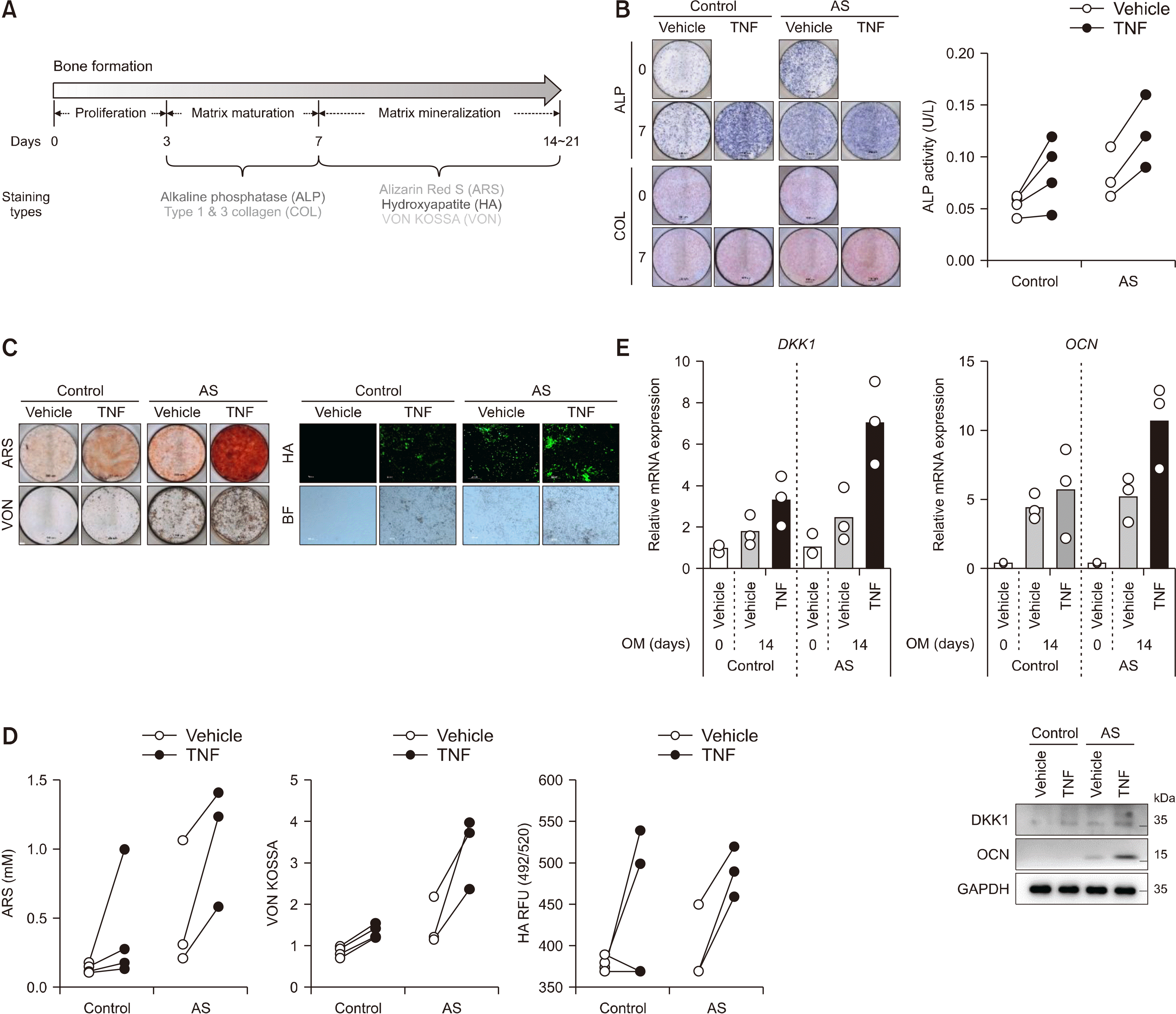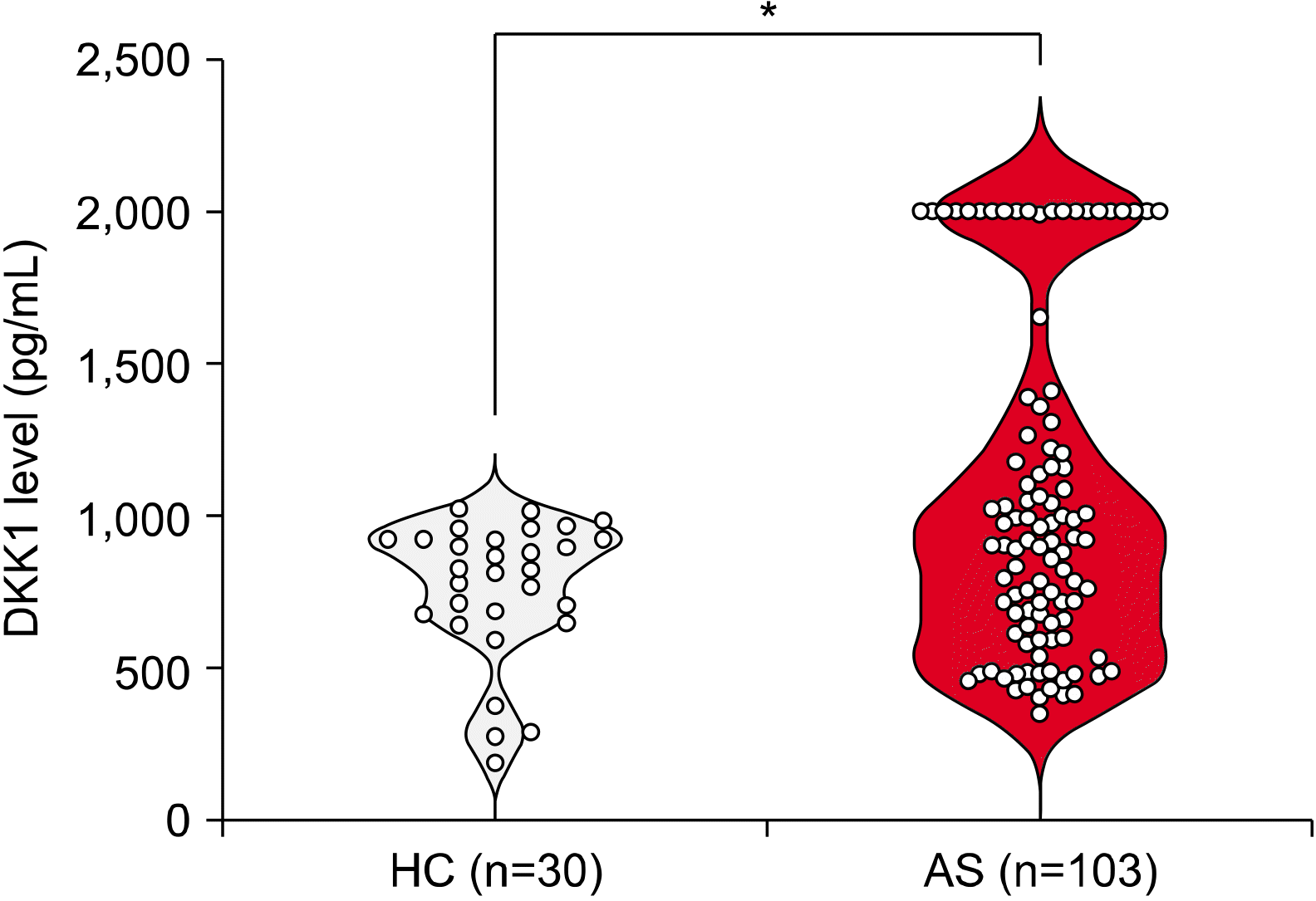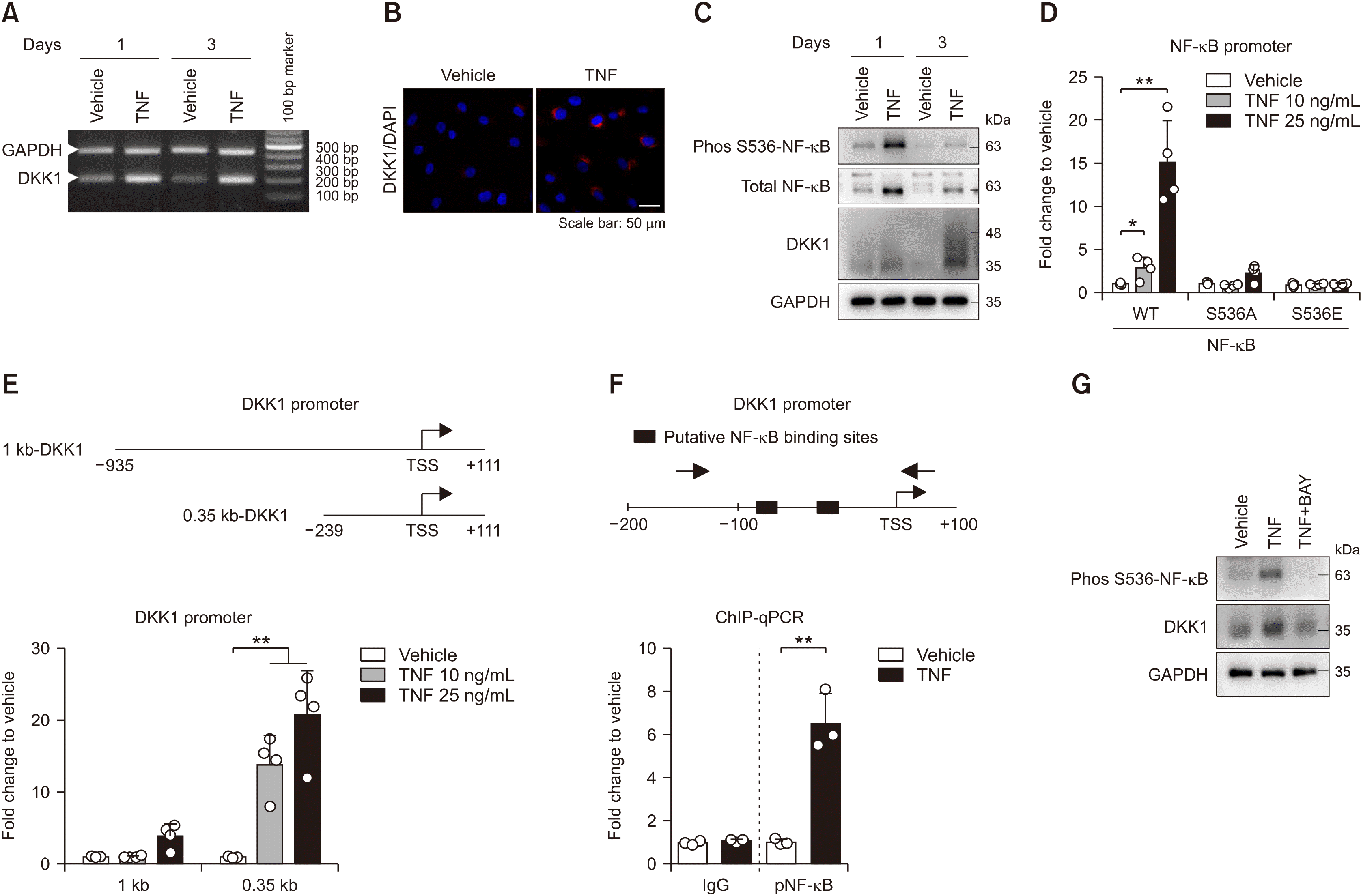1. Machado P, Landewé R, Braun J, Hermann KG, Baker D, van der Heijde D. 2010; Both structural damage and inflammation of the spine contribute to impairment of spinal mobility in patients with ankylosing spondylitis. Ann Rheum Dis. 69:1465–70. DOI:
10.1136/ard.2009.124206. PMID:
20498215.

2. Kiltz U, Braun J. 2020; Assessments of functioning in patients with axial spondyloarthritis. J Rheum Dis. 27:22–9. DOI:
10.4078/jrd.2020.27.1.22.

3. Schett G, Lories RJ, D'Agostino MA, Elewaut D, Kirkham B, Soriano ER, et al. 2017; Enthesitis: from pathophysiology to treatment. Nat Rev Rheumatol. 13:731–41. DOI:
10.1038/nrrheum.2017.188. PMID:
29158573.

4. Gratacós J, Collado A, Filella X, Sanmartí R, Cañete J, Llena J, et al. 1994; Serum cytokines (IL-6, TNF-alpha, IL-1 beta and IFN-gamma) in ankylosing spondylitis: a close correlation between serum IL-6 and disease activity and severity. Br J Rheumatol. 33:927–31. DOI:
10.1093/rheumatology/33.10.927. PMID:
7921752.
5. Braun J, Bollow M, Neure L, Seipelt E, Seyrekbasan F, Herbst H, et al. 1995; Use of immunohistologic and in situ hybridization techniques in the examination of sacroiliac joint biopsy specimens from patients with ankylosing spondylitis. Arthritis Rheum. 38:499–505. DOI:
10.1002/art.1780380407. PMID:
7718003.

6. Koo BS, Oh JS, Park SY, Shin JH, Ahn GY, Lee S, et al. 2020; Tumour necrosis factor inhibitors slow radiographic progression in patients with ankylosing spondylitis: 18-year real-world evidence. Ann Rheum Dis. 79:1327–32. DOI:
10.1136/annrheumdis-2019-216741. PMID:
32660979.

7. Maeda K, Kobayashi Y, Koide M, Uehara S, Okamoto M, Ishihara A, et al. 2019; The regulation of bone metabolism and disorders by Wnt signaling. Int J Mol Sci. 20:5525. DOI:
10.3390/ijms20225525. PMID:
31698687. PMCID:
PMC6888566.

8. Uderhardt S, Diarra D, Katzenbeisser J, David JP, Zwerina J, Richards W, et al. 2010; Blockade of Dickkopf (DKK)-1 induces fusion of sacroiliac joints. Ann Rheum Dis. 69:592–7. DOI:
10.1136/ard.2008.102046. PMID:
19304568.

9. Liu Q, Hu CH, Zhou CH, Cui XX, Yang K, Deng C, et al. 2015; DKK1 rescues osteogenic differentiation of mesenchymal stem cells isolated from periodontal ligaments of patients with diabetes mellitus induced periodontitis. Sci Rep. 5:13142. DOI:
10.1038/srep13142. PMID:
26278788. PMCID:
PMC4538385.

10. Ustun N, Tok F, Kalyoncu U, Motor S, Yuksel R, Yagiz AE, et al. 2014; Sclerostin and Dkk-1 in patients with ankylosing spondylitis. Acta Reumatol Port. 39:146–51. PMID:
25111416.
11. Liao HT, Lin YF, Tsai CY, Chou TC. 2018; Bone morphogenetic proteins and Dickkopf-1 in ankylosing spondylitis. Scand J Rheumatol. 47:56–61. DOI:
10.1080/03009742.2017.1287305. PMID:
28303752.

12. Zhang L, Ouyang H, Xie Z, Liang ZH, Wu XW. 2016; Serum DKK-1 level in the development of ankylosing spondylitis and rheumatic arthritis: a meta-analysis. Exp Mol Med. 48:e228. DOI:
10.1038/emm.2016.12. PMID:
27103566. PMCID:
PMC4855274.

13. Wu M, Chen M, Ma Y, Yang J, Han R, Yuan Y, et al. 2018; Dickkopf-1 in ankylosing spondylitis: review and meta-analysis. Clin Chim Acta. 481:177–83. DOI:
10.1016/j.cca.2018.03.010. PMID:
29544750.

14. van der Linden S, Valkenburg HA, Cats A. 1984; Evaluation of diagnostic criteria for ankylosing spondylitis. A proposal for modification of the New York criteria. Arthritis Rheum. 27:361–8. DOI:
10.1002/art.1780270401. PMID:
6231933.
15. Jo S, Won EJ, Kim MJ, Lee YJ, Jin SH, Park PR, et al. 2020; Nov. 25. STAT3 phosphorylation inhibition for treating inflammation and new bone formation in ankylosing spondylitis. Rheumatology (Oxford). [Epub]. DOI:10.1093/rheumatology/keaa846. DOI:
10.1093/rheumatology/keaa846. PMID:
33237331.

16. Kim HY, Park JH, Won HY, Lee JY, Kong G. 2015; CBX7 inhibits breast tumorigenicity through DKK-1-mediated suppression of the Wnt/β-catenin pathway. FASEB J. 29:300–13. DOI:
10.1096/fj.14-253997. PMID:
25351982.

17. Kim H, Chung H, Kim HJ, Lee JY, Oh MY, Kim Y, et al. 2008; Id-1 regulates Bcl-2 and Bax expression through p53 and NF-kappaB in MCF-7 breast cancer cells. Breast Cancer Res Treat. 112:287–96. DOI:
10.1007/s10549-007-9871-6. PMID:
18158619.
18. Jo S, Wang SE, Lee YL, Kang S, Lee B, Han J, et al. 2018; IL-17A induces osteoblast differentiation by activating JAK2/STAT3 in ankylosing spondylitis. Arthritis Res Ther. 20:115. DOI:
10.1186/s13075-018-1582-3. PMID:
29880011. PMCID:
PMC5992730.

19. Lacazette E. 2017; A laboratory practical illustrating the use of the ChIP-qPCR method in a robust model: estrogen receptor alpha immunoprecipitation using Mcf-7 culture cells. Biochem Mol Biol Educ. 45:152–60. DOI:
10.1002/bmb.20999. PMID:
27666748.

20. Wang SE, Ko SY, Jo S, Choi M, Lee SH, Jo HR, et al. 2017; TRPV1 regulates stress responses through HDAC2. Cell Rep. 19:401–12. DOI:
10.1016/j.celrep.2017.03.050. PMID:
28402861.

21. Diarra D, Stolina M, Polzer K, Zwerina J, Ominsky MS, Dwyer D, et al. 2007; Dickkopf-1 is a master regulator of joint remodeling. Nat Med. 13:156–63. DOI:
10.1038/nm1538. PMID:
17237793.

22. Choe JY, Kim JH, Park KY, Choi CH, Kim SK. 2016; Activation of dickkopf-1 and focal adhesion kinase pathway by tumour necrosis factor α induces enhanced migration of fibroblast-like synoviocytes in rheumatoid arthritis. Rheumatology (Oxford). 55:928–38. DOI:
10.1093/rheumatology/kev422. PMID:
26715774.

23. Lavocat F, Osta B, Miossec P. 2016; Increased sensitivity of rheumatoid synoviocytes to Schnurri-3 expression in TNF-α and IL-17A induced osteoblastic differentiation. Bone. 87:89–96. DOI:
10.1016/j.bone.2016.04.008. PMID:
27072520.

24. Osta B, Lavocat F, Eljaafari A, Miossec P. 2014; Effects of interleukin-17A on osteogenic differentiation of isolated human mesenchymal stem cells. Front Immunol. 5:425. DOI:
10.3389/fimmu.2014.00425. PMID:
25228904. PMCID:
PMC4151036.

25. Li X, Wang J, Zhan Z, Li S, Zheng Z, Wang T, et al. 2018; Inflammation intensity-dependent expression of osteoinductive Wnt proteins is critical for ectopic new bone formation in ankylosing spondylitis. Arthritis Rheumatol. 70:1056–70. DOI:
10.1002/art.40468. PMID:
29481736.

26. Jo S, Yoon S, Lee SY, Kim SY, Park H, Han J, et al. 2020; DKK1 induced by 1,25D3 is required for the mineralization of osteoblasts. Cells. 9:236. DOI:
10.3390/cells9010236. PMID:
31963554. PMCID:
PMC7017072.

27. Li X, Liu P, Liu W, Maye P, Zhang J, Zhang Y, et al. 2005; Dkk2 has a role in terminal osteoblast differentiation and mineralized matrix formation. Nat Genet. 37:945–52. DOI:
10.1038/ng1614. PMID:
16056226.

28. Nam B, Park H, Lee YL, Oh Y, Park J, Kim SY, et al. 2020; TGFβ1 suppressed matrix mineralization of osteoblasts differentiation by regulating SMURF1-C/EBPβ-DKK1 axis. Int J Mol Sci. 21:9771. DOI:
10.3390/ijms21249771. PMID:
33371439. PMCID:
PMC7767413.

29. Tuylu T, Sari I, Solmaz D, Kozaci DL, Akar S, Gunay N, et al. 2014; Fetuin-A is related to syndesmophytes in patients with ankylosing spondylitis: a case control study. Clinics (Sao Paulo). 69:688–93. DOI:
10.6061/clinics/2014(10)07. PMID:
25518021. PMCID:
PMC4221327.

30. Huang J, Song G, Yin Z, Fu Z, Ye Z. 2016; Alteration of bone turnover markers in canonical wingless pathway in patients with ankylosing spondylitis. Arch Rheumatol. 31:221–8. DOI:
10.5606/ArchRheumatol.2016.5857. PMID:
29900942. PMCID:
PMC5827846.

31. Daoussis D, Liossis SN, Solomou EE, Tsanaktsi A, Bounia K, Karampetsou M, et al. 2010; Evidence that Dkk-1 is dysfunctional in ankylosing spondylitis. Arthritis Rheum. 62:150–8. DOI:
10.1002/art.27231. PMID:
20039407.

32. Rossini M, Viapiana O, Idolazzi L, Ghellere F, Fracassi E, Troplini S, et al. 2016; Higher level of Dickkopf-1 is associated with low bone mineral density and higher prevalence of vertebral fractures in patients with ankylosing spondylitis. Calcif Tissue Int. 98:438–45. DOI:
10.1007/s00223-015-0093-3. PMID:
26645432.

33. Kwon SR, Lim MJ, Suh CH, Park SG, Hong YS, Yoon BY, et al. 2012; Dickkopf-1 level is lower in patients with ankylosing spondylitis than in healthy people and is not influenced by anti-tumor necrosis factor therapy. Rheumatol Int. 32:2523–7. DOI:
10.1007/s00296-011-1981-0. PMID:
21833531.

34. Korkosz M, Gąsowski J, Leszczyński P, Pawlak-Buś K, Jeka S, Kucharska E, et al. 2013; High disease activity in ankylosing spondylitis is associated with increased serum sclerostin level and decreased wingless protein-3a signaling but is not linked with greater structural damage. BMC Musculoskelet Disord. 14:99. DOI:
10.1186/1471-2474-14-99. PMID:
23509994. PMCID:
PMC3639156.

35. Sakellariou GT, Iliopoulos A, Konsta M, Kenanidis E, Potoupnis M, Tsiridis E, et al. 2017; Serum levels of Dkk-1, sclerostin and VEGF in patients with ankylosing spondylitis and their association with smoking, and clinical, inflammatory and radiographic parameters. Joint Bone Spine. 84:309–15. DOI:
10.1016/j.jbspin.2016.05.008. PMID:
27369645.

36. Niu CC, Lin SS, Yuan LJ, Chen LH, Yang CY, Chung AN, et al. 2017; Correlation of blood bone turnover biomarkers and Wnt signaling antagonists with AS, DISH, OPLL, and OYL. BMC Musculoskelet Disord. 18:61. DOI:
10.1186/s12891-017-1425-4. PMID:
28153008. PMCID:
PMC5290649.

37. Li S, Yin Y, Yao L, Lin Z, Sun S, Zhang J, et al. 2020; TNF‑α treatment increases DKK1 protein levels in primary osteoblasts via upregulation of DKK1 mRNA levels and downregulation of miR‑335‑5p. Mol Med Rep. 22:1017–25. DOI:
10.3892/mmr.2020.11152. PMID:
32468044. PMCID:
PMC7339467.









 PDF
PDF Citation
Citation Print
Print



 XML Download
XML Download